Dealing With Car Stalls While Driving But Starts Back Up
Your car suddenly stalls in traffic, but it starts right up again. This issue can leave you feeling both puzzled and worried. Our guide will explain the common reasons for this odd behavior and offer practical advice to keep you moving safely.
Common Reasons for Car Stalls While Driving But Starts Back Up
Car stalling while driving can be caused by various issues such as fuel problems, battery issues, engine sensors, overheating, faulty spark plugs, and timing belt issues. Identifying the underlying cause is crucial in addressing the problem effectively.
Fuel Issues
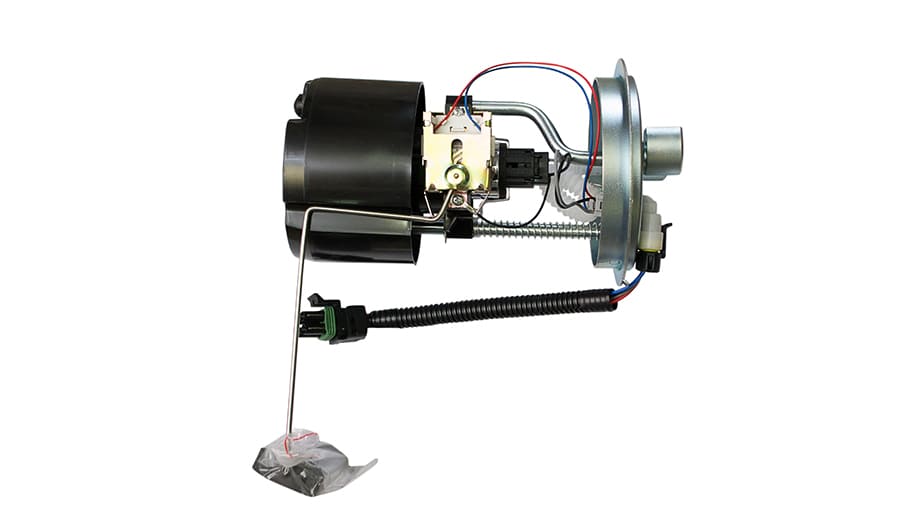
Fuel problems often lead to your car stalling while driving. A faulty fuel pump might be the culprit. It should give the engine the right amount of fuel, but if it fails, the car stops.
Dirty fuel filters can also cause trouble by blocking the flow of gas.
Another issue could be a low fuel pressure affecting your engine. This makes starting up easy but can still lead to stalling out on the road.
Battery Problems
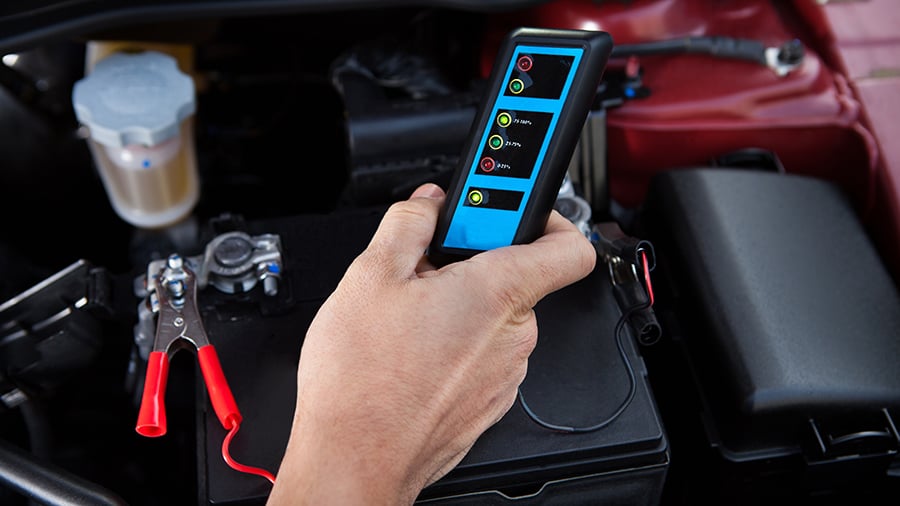
When faced with car stalling issues, battery problems can be a likely culprit. Faulty alternators or dead batteries can cause sudden power supply disruptions to the engine, leading to stalling while driving.
Additionally, worn-out battery connections and corroded terminals may result in intermittent loss of power, causing the vehicle to shut off unexpectedly. It is crucial to regularly inspect and maintain the battery and its components to prevent stalling incidents on the road.
Ignoring battery problems could lead to dangerous situations when your vehicle stalls while driving.
Engine Sensors
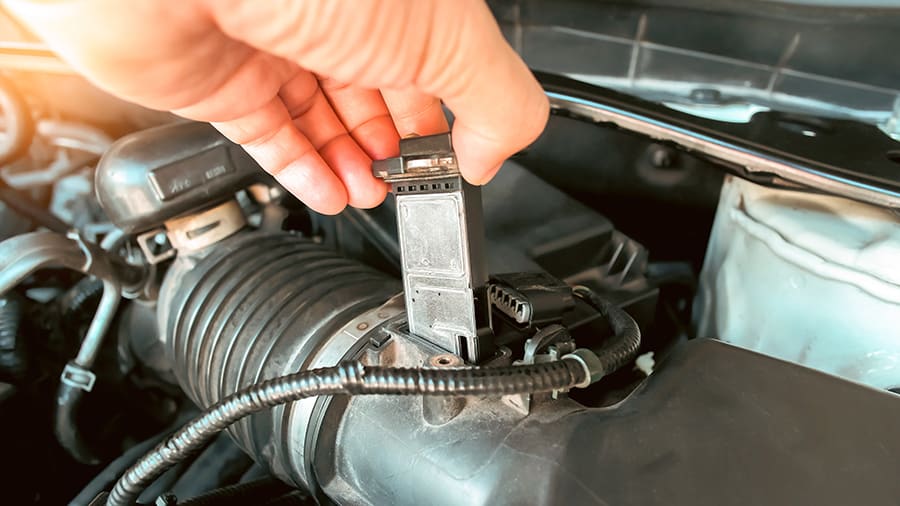
When dealing with car stalling issues, one crucial aspect to consider is the condition of the engine sensors. Engine sensors are vital in monitoring critical parameters such as coolant levels, air intake, and camshaft position.
A malfunctioning sensor can cause incorrect readings, leading to fuel delivery problems, ignition issues, or even sudden engine shutdowns. Regular inspection and maintenance of engine sensors are essential to ensure their proper functioning and prevent potential stalling while driving scenarios.
Engine sensors such as the camshaft position sensor and coolant temperature sensor are key components that provide vital data for optimal engine performance. When these sensors fail or send inaccurate signals to the vehicle’s computer system (ECU), it can result in erratic behavior, such as stalling while driving but starting back up quickly.
Overheating
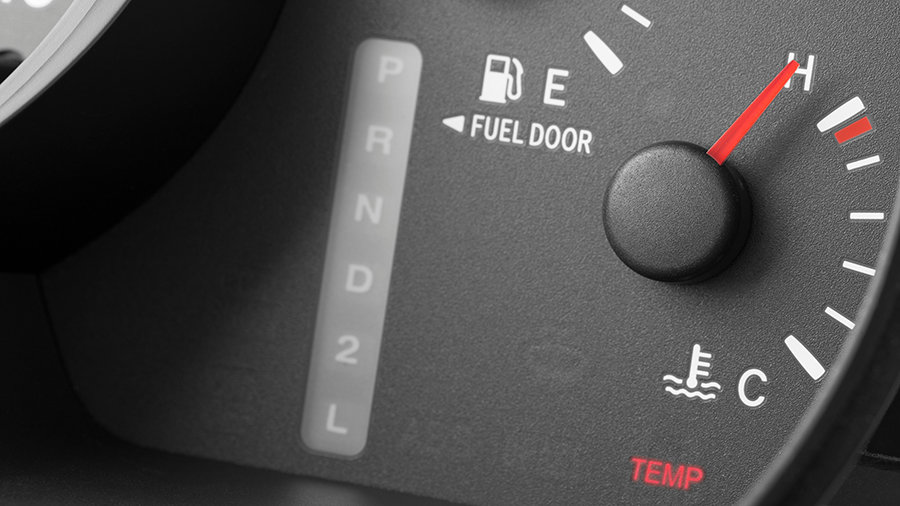
Overheating can cause a car to stall while driving and start back up quickly. If the engine temperature rises too high, it can lead to a shutdown, but once it cools down, the car may begin again with no apparent issues.
Overheating is often caused by coolant system problems or a malfunctioning thermostat, leading to potential damage if not addressed promptly.
Regular cooling system checks, including the radiator, hoses, water pump, and thermostat, prevent overheating-related stalling. Additionally, ensuring proper coolant levels and promptly addressing leaks can help maintain optimal engine temperature and prevent sudden shut-offs.
Faulty Spark Plugs
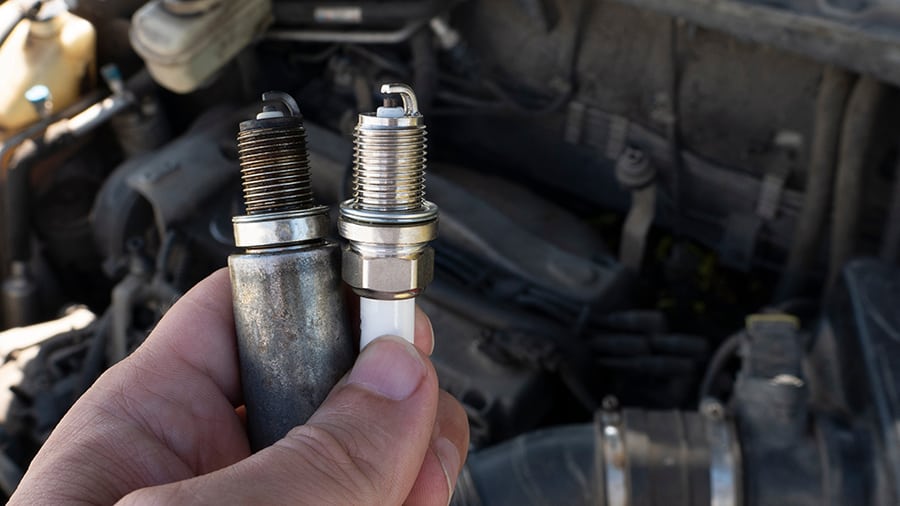
Regarding potential causes of a car stalling while driving but starting back up quickly, faulty spark plugs can be a culprit. The ignition system relies on spark plugs to ignite the engine’s fuel; if worn out or damaged, it can lead to intermittent stalling.
This can result in the engine shutting off unexpectedly while driving, but fortunately, replacing or repairing the spark plugs can often resolve this issue.
In addition to causing stalling while driving and starting back up quickly, worn-out or faulty spark plugs can also lead to decreased fuel efficiency and rough idling. Regular inspection and maintenance of the spark plugs are essential for ensuring the smooth operation of the vehicle’s engine and preventing potential stalling issues.
Timing Belt Issues
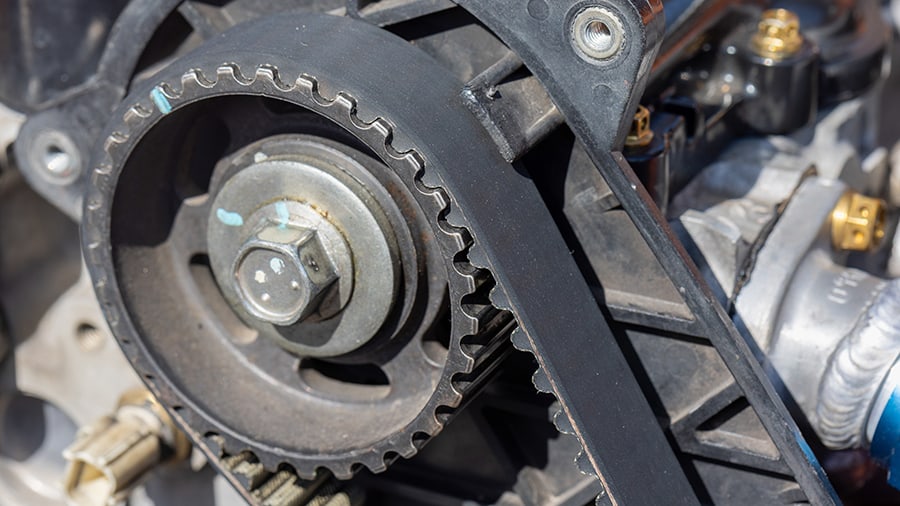
The timing belt plays a crucial role in the engine’s operation, ensuring that the camshaft and crankshaft rotate together. If the timing belt breaks or slips, it can cause severe damage to the engine, leading to stalling while driving.
A broken or worn-out timing belt may also result in a loss of power supply and spark loss, causing intermittent stalling. Regular inspection and timely timing belt replacement are vital to prevent stalling issues while driving.
If neglected, a faulty timing belt can lead to catastrophic engine failure, expensive repairs, and safety hazards on the road. Therefore, staying vigilant about the condition of the timing belt is essential for maintaining a reliable and safe vehicle.
What to Do When Your Car Randomly Dies While Driving
When your car randomly dies while driving, it is essential to guide the vehicle to the side of the road, check fuel and temperature levels, restart the vehicle, use emergency lights, and ask for assistance.
These steps can help ensure your safety and prevent further damage to your vehicle.
Guide the Car to the Side of the Road

To guide the car to the side of the road, steer gradually and turn on your emergency lights. Gently apply brakes while checking for a safe spot to stop, away from traffic. Use hazard triangles or cones for visibility before addressing the issue or seeking assistance.
After safely pulling over, prioritize checking fuel and temperature levels, as low fuel pressure or overheating could cause stalling. Restarting the car may resolve temporary issues, but always ensure safety by assessing your surroundings and considering the following steps.
Let’s move on to “Check Fuel and Temperature Levels.”
Check Fuel and Temperature Levels
Ensure fuel and temperature levels are adequate for optimal engine performance. Regularly check coolant levels to prevent overheating and ensure proper engine function. Low fuel pressure can cause stalling while driving, emphasizing the importance of maintaining sufficient fuel levels for smooth operation.
Ignition faults can also lead to engine stalling, making it crucial to inspect the ignition system regularly.
Regular maintenance of the alternator, coolant sensor, and fuel system can help avoid sudden power supply issues that may cause stalling while driving. Monitoring these components will improve reliable vehicle performance and minimize potential stalling incidents.
Restart the Car
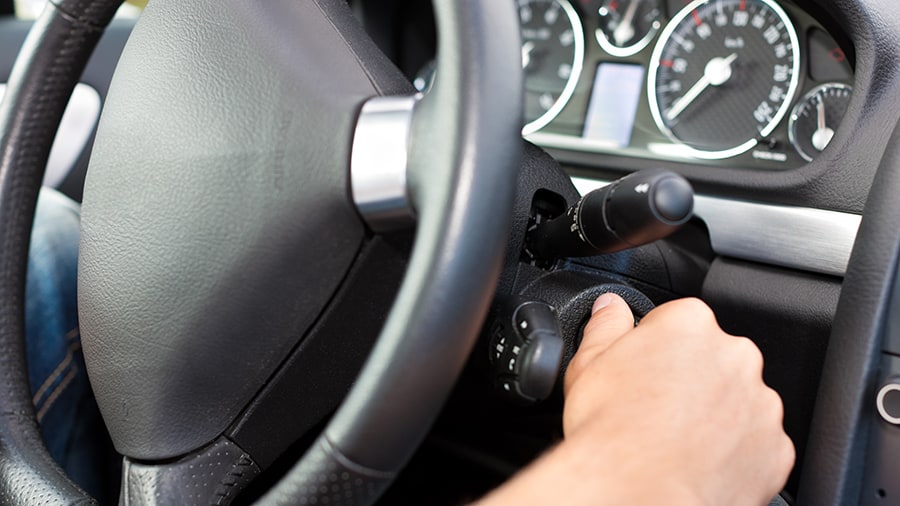
First, restart the car after it stalls while driving, shift to neutral, or park. Then, turn the ignition key to restart the engine. If that doesn’t work, wait a few minutes before attempting to start again.
If restarting fails, check the fuel and temperature levels and inspect the battery connections.
Using emergency lights while restarting can alert other drivers to your situation. Asking for assistance from nearby drivers or contacting roadside services is also essential.
Use Emergency Lights
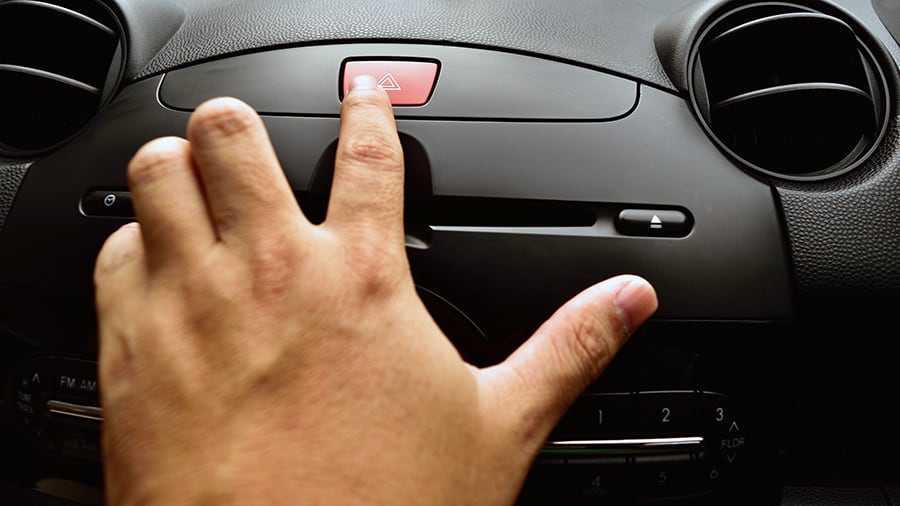
After attempting to restart the car, if it starts back up quickly but is still on the side of the road or in a potentially dangerous location, it’s essential to use your vehicle’s emergency lights.
Engaging your emergency lights will help signal other drivers that there is an issue with your vehicle and prompt them to proceed cautiously. This can help create a safer environment for you and others on the road by alerting them to slow down and be prepared for any unexpected situations.
In addition, turning on your hazard lights can also help prevent potential accidents while you address the stalling issue or seek assistance. It is one of the crucial safety measures that should always be taken when encountering car troubles while driving.
Ask for Assistance
If your car continues to stall while driving despite attempts to fix it, seek professional help from a certified auto mechanic. Ignoring persistent stalling issues can lead to further damage and compromise your safety on the road.
A trained technician can diagnose the root cause of the problem using diagnostic tools and expertise, ensuring that all necessary repairs are accurately identified and promptly addressed.
When experiencing ongoing stalling issues even after attempting DIY fixes, contact an experienced mechanic with knowledge of fuel system components, ECU diagnostics, ignition systems, and engine performance.
How to Fix a Stalling Vehicle
Check the ignition system, coolant, and battery levels to identify any issues causing the stalling. Additionally, inspect the fuses to ensure they are not blown or damaged.
Check Ignition System
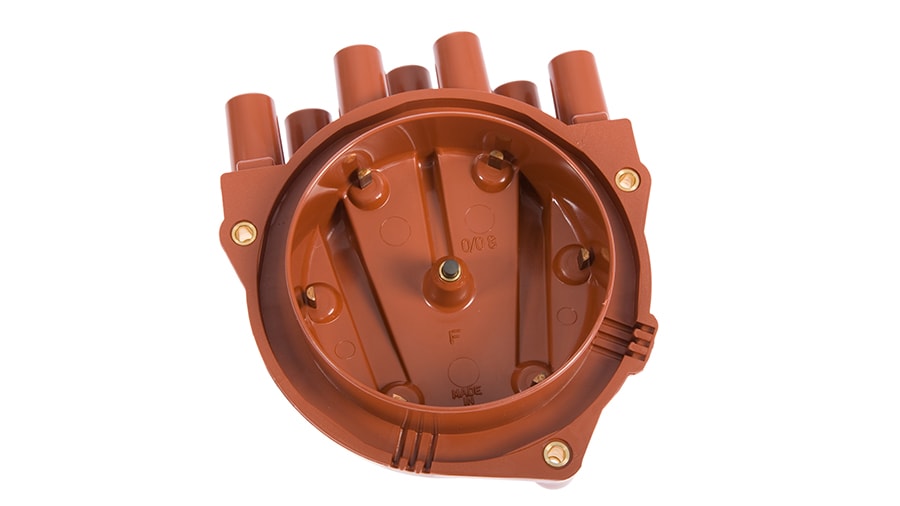
Inspect the ignition system for faulty coils, worn-out distributor caps, or damaged rotor buttons. A malfunctioning ignition system can cause spark loss and lead to intermittent stalling while driving, affecting the engine’s performance and causing the car to shut off unexpectedly.
Look out for signs of spark plugs wearing out too quickly, as this could indicate an underlying issue with the ignition system that needs attention from a professional mechanic.
Check Coolant and Battery Levels
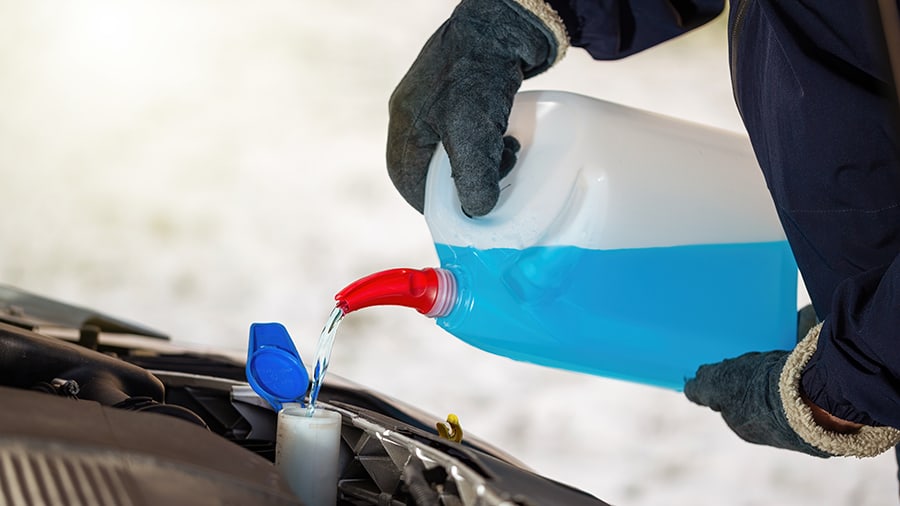
Regularly checking and maintaining proper coolant and battery levels is crucial in preventing car stalling while driving. Low coolant levels can lead to overheating, causing engine failure, while low battery levels can affect the electrical system, leading to sudden power loss and stalling.
A well-maintained cooling system and a fully charged battery are essential for the vehicle’s smooth operation, reducing the risk of unexpected stalling incidents. Maintaining optimal levels helps ensure these critical components function correctly, promoting safe and reliable driving experiences.
Adequate coolant level prevents engine overheating by facilitating heat dissipation during operation, while a fully charged battery ensures consistent power supply to vital electrical components.
Inspect Fuses
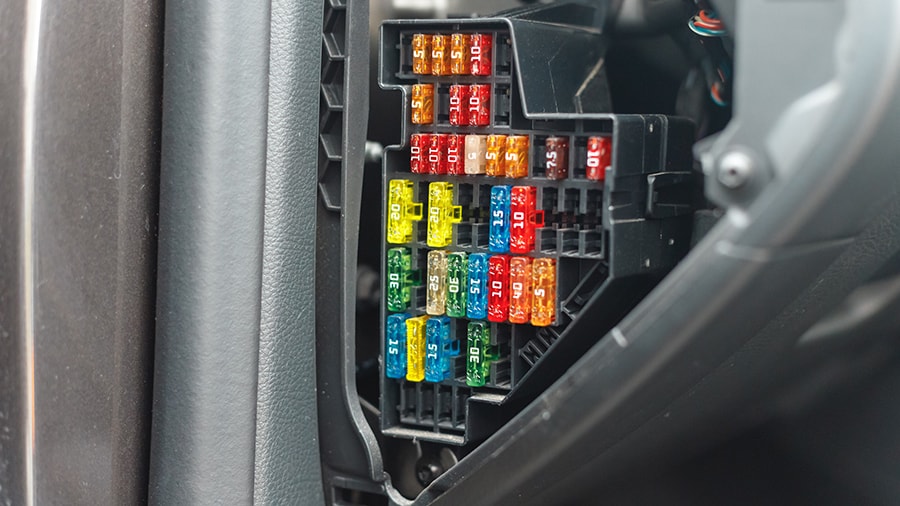
After checking coolant and battery levels, inspecting fuses is another crucial step in fixing a stalling vehicle. The car’s electrical system relies on fuses to protect against overloads, so check for any blown or damaged fuses using the owner’s manual.
A faulty fuse can disrupt the power supply to essential components such as the ignition system and fuel pump, potentially leading to stalling while driving. Make sure to replace any defective fuses with the correct amperage to ensure the proper functioning of the electrical systems.
It’s essential to regularly inspect and replace damaged fuses in your vehicle’s electrical system as part of routine maintenance. Faulty or blown fuses can lead to various issues, including engine stalling while driving but starting back up quickly, which can be frustrating and potentially hazardous if not addressed promptly.
Common Causes of Intermittent Stalling
Low fuel pressure, ignition faults, and Hall effect sensors are common causes of intermittent stalling while driving. Want to learn more about how to diagnose and fix these issues? Keep reading for helpful tips!
Low Fuel Pressure
Low fuel pressure can cause the engine to stall while driving and start back up quickly. A decrease in fuel pressure can result from a clogged fuel filter, a failing fuel pump, or issues with the fuel injectors.
This can disrupt the proper air-fuel mixture required for efficient engine performance, causing intermittent stalling. Regular inspection and maintenance of the fuel system components are essential to prevent low fuel pressure and potential stalling issues.
Low fuel pressure can lead to poor engine performance, reduced fuel efficiency, and complete vehicle stalling if left unaddressed. Maintaining optimal fuel pressure through timely replacements of filters and regular inspections is crucial for preventing this common cause of intermittent stalling while driving.
Ignition Faults
Moving from low fuel pressure to ignition faults, it’s crucial to recognize that faulty ignition components can lead to intermittent stalling while driving. Issues with the ignition coils, distributor caps, rotor buttons, or even the ECU can disrupt the spark supply needed for proper engine function.
This disruption in spark supply can cause the car to stall unexpectedly but then start back up quickly as the spark issue resolves itself momentarily.
When encountering a car stalling while driving but starting back up quickly due to ignition faults, promptly inspecting and addressing any potential issues with these components becomes essential.
Hall Effect Sensors
Hall Effect sensors can lead to intermittent stalling in a car. These sensors monitor the speed and position of various components, such as the crankshaft and camshaft. When they fail or become faulty, they can disrupt the engine timing, which may cause the car to stall while driving.
Ignition faults related to Hall Effect sensors can also result in loss of power and stalling. Additionally, low fuel pressure caused by Hall Effect sensor malfunctioning can lead to sudden drops in power supply, potentially causing the engine to shut off unexpectedly.
The Hall Effect sensor’s role is critical for the ignition system and fuel supply to function correctly. If you are experiencing stalling issues with your vehicle, it’s essential to consider having these sensors inspected as part of troubleshooting efforts.
FAQs
What causes my car to stall but then start back up quickly while driving?
Your car might stall due to fuel pump failure, ignition system issues, or other engine problems. It’s good that the engine is starting to back up quickly, though.
How can I determine why my car shuts off while driving?
To diagnose your car stalling while driving, you must check for common causes like automotive issues within the fuel and ignition systems or use car troubleshooting techniques.
Is it normal for a car to turn off unexpectedly while driving?
No, it’s not normal for cars to shut off while on the road; this could be a sign of trouble with your engine and should be checked by a professional.
Should I perform regular maintenance on my car to prevent it from stalling?
Following car maintenance tips, such as checking the fuel pump and ignition system, can help prevent your engine from shutting off while driving.
After restarting my stalled car, what should I do next?
If your vehicle has starting issues after stalling but restarts every time, take it in for a thorough inspection and necessary car repair to address any underlying automotive problems.
Conclusion
In conclusion, when your car stalls while driving but starts back up quickly, it’s essential to swiftly guide the vehicle to safety and check for common reasons such as fuel issues or engine sensors.
Regular maintenance of the alternator, coolant sensor, and ignition components can help prevent stalling while driving. Addressing stalling issues promptly is crucial for vehicle safety and reliability.
Seeking professional assistance may be necessary if the problem persists despite troubleshooting efforts. Remember to proactively maintain your car’s health to avoid unexpected stalling incidents on the road.
